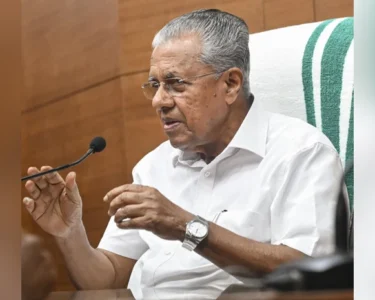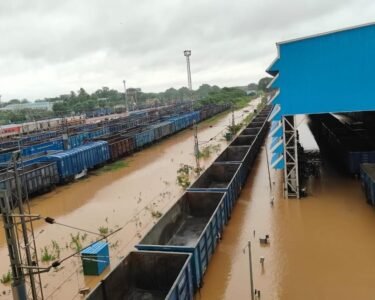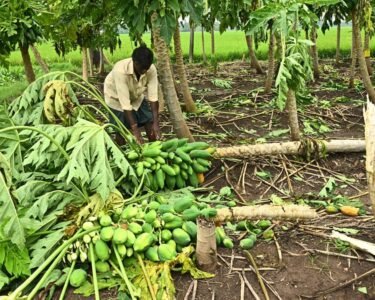In a significant move to boost Andhra Pradesh’s irrigation infrastructure, Chief Minister N. Chandrababu Naidu announced that the Detailed Project Report (DPR) for the Polavaram-Banakacherla project is in its final stages and will soon be submitted to the central government for approval. This landmark initiative, part of Naidu’s broader vision to transform Andhra Pradesh into a drought-resilient and water-secure state, is expected to dramatically change the landscape of irrigation and agriculture in the Rayalaseema region.
What is the Polavaram-Banakacherla Project?
The Polavaram-Banakacherla project is a proposed inter-basin water transfer scheme that aims to divert surplus Godavari river water through the Polavaram dam and deliver it to the drought-prone Rayalaseema region via the Banakacherla canal system. This ambitious project forms a vital component of the state’s water grid strategy and is seen as a long-term solution to persistent water shortages in southern Andhra Pradesh.
The Importance of the DPR
The DPR (Detailed Project Report) is a comprehensive document that outlines the project’s technical feasibility, environmental impact, financial requirements, and socio-economic benefits. Preparing a DPR is a crucial step before seeking approval and funding from the central government. CM Naidu confirmed that experts and engineers are finalizing key technical details, including water flow mechanisms, canal design, land acquisition plans, and cost estimates.
Naidu’s Push for Water Security in Rayalaseema
Chief Minister Naidu reiterated that water security for the Rayalaseema region remains one of his top priorities. Addressing a press meet in Amaravati, he stated, “Rayalaseema has long suffered from drought and inadequate irrigation. This project is not just about water, but about hope, prosperity, and a better future for our farmers.”
He added that the Polavaram-Banakacherla linkage would ensure optimal utilization of Godavari waters, which often flow untapped into the sea, while providing a lifeline to arid zones in the state.
Strategic Timing: Leveraging Central Support
Naidu’s announcement comes at a strategic time, with the Union government inviting proposals under its new National Water Security Mission. By fast-tracking the DPR submission, Andhra Pradesh aims to secure early-stage funding and project clearance from the Centre. The state government is also likely to seek support under the Accelerated Irrigation Benefits Programme (AIBP).
Environmental and Technical Considerations
The DPR reportedly includes detailed environmental impact assessments and mitigation strategies. Since the project involves diversion of river water across basins and construction of long-distance canal systems, environmental clearances will be a key hurdle. Officials indicated that care has been taken to ensure compliance with the Forest Conservation Act and Environmental Protection Act.
On the technical side, the proposed route involves integration with the existing Polavaram Right Main Canal, pumping stations, and the Banakacherla head regulator. Advanced geospatial and hydrological tools are being used to model the water flow and efficiency.
Potential Benefits of the Project
The project, once implemented, promises multiple benefits:
- Irrigation Coverage: Will irrigate over 5 lakh acres in Rayalaseema districts including Kurnool, Anantapur, and Kadapa.
- Drinking Water Supply: Will provide safe drinking water to several drought-prone towns and villages.
- Groundwater Recharge: Will help recharge depleting groundwater tables in the region.
- Employment and Development: Construction and post-completion agricultural activity will generate rural employment.
Financial Aspects and Budgetary Support
According to preliminary estimates, the project is expected to cost around ₹18,000 to ₹20,000 crore. The DPR includes detailed financial breakdowns, proposed phases of construction, and cost-benefit analysis. CM Naidu indicated that the state is seeking 90:10 funding under central schemes and is open to exploring public-private partnerships for specific components.
Opposition Reactions and Political Context
Opposition parties have raised concerns about environmental impact and land acquisition. Some local groups demand transparency in how affected villages will be compensated. However, the state government maintains that stakeholder consultations have already begun and affected families will be provided with appropriate compensation and rehabilitation packages.
Public Support and Farmer Optimism
Farmers across Rayalaseema have welcomed the move, expressing hope that the project will finally put an end to their dependency on erratic rainfall and borewells. Many local agricultural unions have extended support to the project and are urging the Centre to fast-track its approval.
Conclusion: A Step Towards Sustainable Growth
The Polavaram-Banakacherla project stands as a symbol of Andhra Pradesh’s irrigation revival efforts under CM Chandrababu Naidu’s leadership. As the state races against time to complete the DPR and secure central support, this ambitious water-linking project could be a game-changer for the state’s drought-struck regions. If executed successfully, it will not only reshape the water economy of Rayalaseema but also reaffirm Andhra Pradesh’s position as a frontrunner in integrated water resource management.







